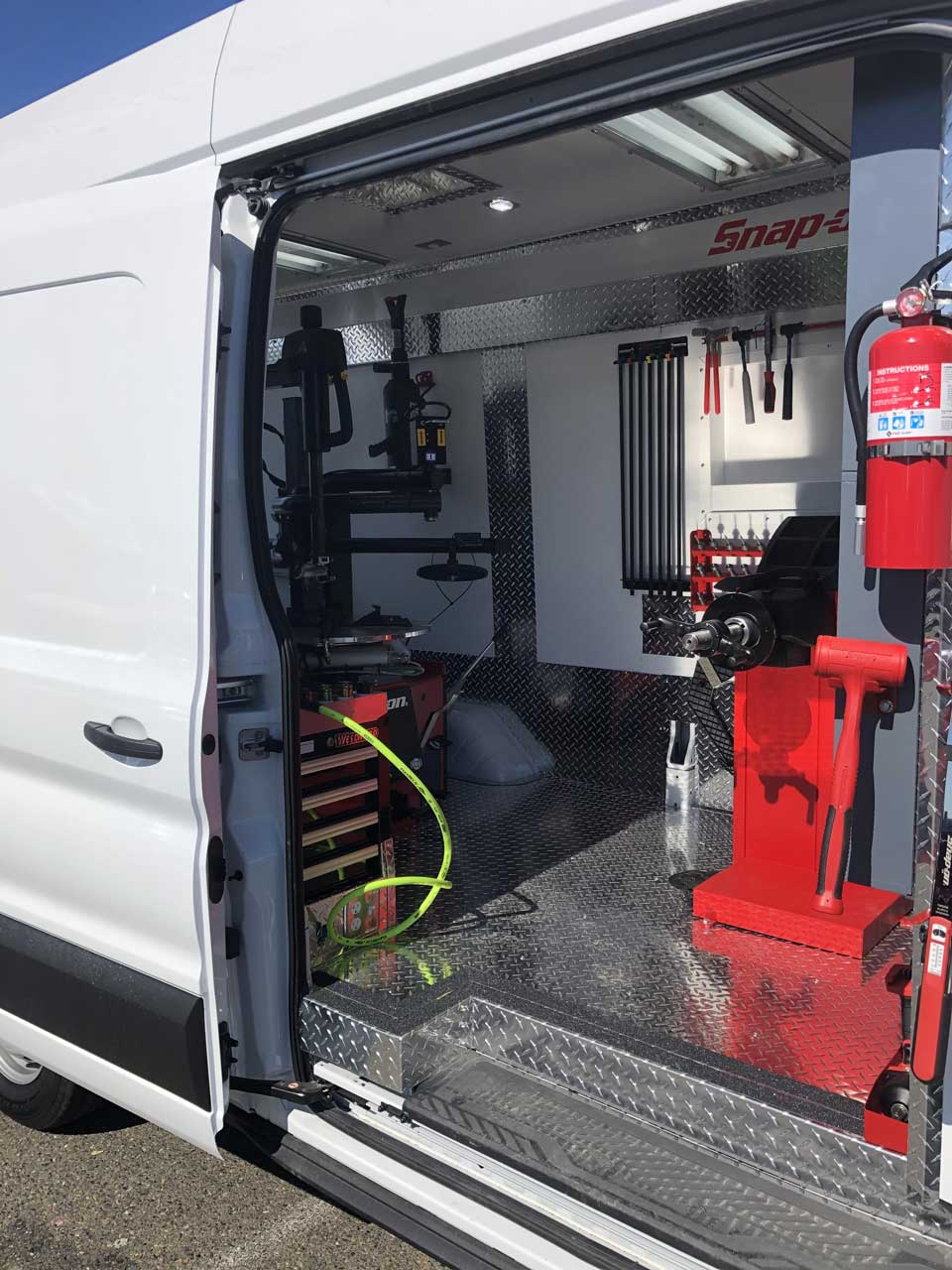Enhance Your Drive: Top-Notch GMC Tires Service at Morris Tires
Wiki Article
Tire Service: The Influence of Weather Condition Conditions
When it comes to making certain ideal efficiency and safety on the road, recognizing the effect of weather conditions on tire solution is vital. GMC Tire Service. In this conversation, we will certainly explore the intricate connection in between weather conditions and tire solution, losing light on the value of weather-specific tire upkeep techniques and considerations.Warm and Tire Performance
When exposed to heats, tires experience changes in efficiency that can substantially influence car security and handling. The warmth generated from long term driving or heat conditions creates the tire rubber to soften, resulting in decreased tread life and enhanced wear. As the rubber ends up being softer, the tire's grip on the road lessens, affecting braking ranges and total grip. In severe situations, extreme heat can even cause tire blowouts, positioning an extreme safety risk to the car and its residents.
Winter Effects
Winter conditions can have a substantial influence on tire efficiency and security. As temperature levels drop, tire rubber can set, causing lowered traction on icy or snow-covered roadways. In winter, tires might likewise lose atmospheric pressure a lot more rapidly, which can influence dealing with and gas effectiveness. In addition, chilly temperatures can create tire sidewalls to tense, boosting the risk of damages from craters or other road threats.To minimize the results of cool climate on tires, it is critical to frequently check tire stress and inflate them to the manufacturer's suggested levels. Using wintertime or all-season tires developed for winter conditions can likewise improve grip and hold on icy or snowy roadways. Correct tire upkeep, consisting of normal evaluations for wear and damage, becomes also a lot more essential throughout chillier months to ensure ideal performance and security.
Rainy Conditions Effect
Tires with worn-out treads are a lot more prone to hydroplaning, where a layer of water builds up between the tire and the roadway surface, leading to loss of traction. To battle this, vehicle drivers should frequently examine their tires for ample walk deepness and consider spending in tires especially created for wet conditions.In addition, wet weather can also reduce visibility, making it testing for vehicle drivers to see the road ahead plainly (GMC Tire Service). In such conditions, it is vital to adjust driving rates appropriately and keep a risk-free adhering to distance to allow for unexpected quits. Appropriately inflated tires can additionally aid in keeping control on wet roadways by providing much better handling and grip
Snow and Tire Safety And Security
When driving in snowy conditions, having the ideal tires can make a substantial difference in safety and security and efficiency. Winter season tires are designed with special rubber substances and tread patterns to supply far better grip on snow and ice compared to all-season tires.
In addition, chauffeurs must think about setting up tire chains in severe snowy problems. Tire chains supply added grip by clutching the snow and ice, boosting security and control. However, it is important to adhere to producer directions when setting up and making use of tire chains to avoid damage to the tires and car. By selecting the right tires, maintaining proper inflation, and thinking about added traction aids like a knockout post tire chains, drivers can enhance their safety and security when browsing snow-covered roads.
Weather-Related Tire Maintenance
When encountered with different weather problems, proper tire maintenance becomes a critical element of lorry safety and security and efficiency. Weather-related tire upkeep incorporates a series of methods intended at making sure ideal tire feature and longevity in different weather circumstances. One essential element of weather-related tire upkeep is tire stress policy. Fluctuating temperatures can create tire stress to differ, affecting grip and gas efficiency. Consistently changing and inspecting tire stress according to supplier referrals is vital for secure driving in transforming climate condition. Additionally, tire walk deepness plays a significant function in dealing with various climate components. Tires with adequate tread depth supply better grasp on damp or icy roadways, reducing the risk of skidding or hydroplaning. When tread wear reaches a specific depth is vital for maintaining grip and stability in damaging climate, evaluating tire walk consistently and changing tires. By prioritizing weather-related tire maintenance, vehicle drivers can enhance safety and security, boost automobile efficiency, and extend the life expectancy of their tires.
Verdict
Finally, climate conditions have a significant effect on tire efficiency and safety. From heat influencing tire stress and wear to chilly weather condition minimizing grip, it is important to think about the climate when preserving published here and utilizing tires. Stormy problems can decrease grasp and result in hydroplaning, while snow can boost the risk of accidents if tires are not appropriately geared up. Weather-related tire maintenance is vital in making certain optimal efficiency and safety on the roadways.In this discussion, we will explore the elaborate connection between weather condition problems and tire solution, losing light on the importance of weather-specific tire upkeep methods and factors to consider.

Report this wiki page